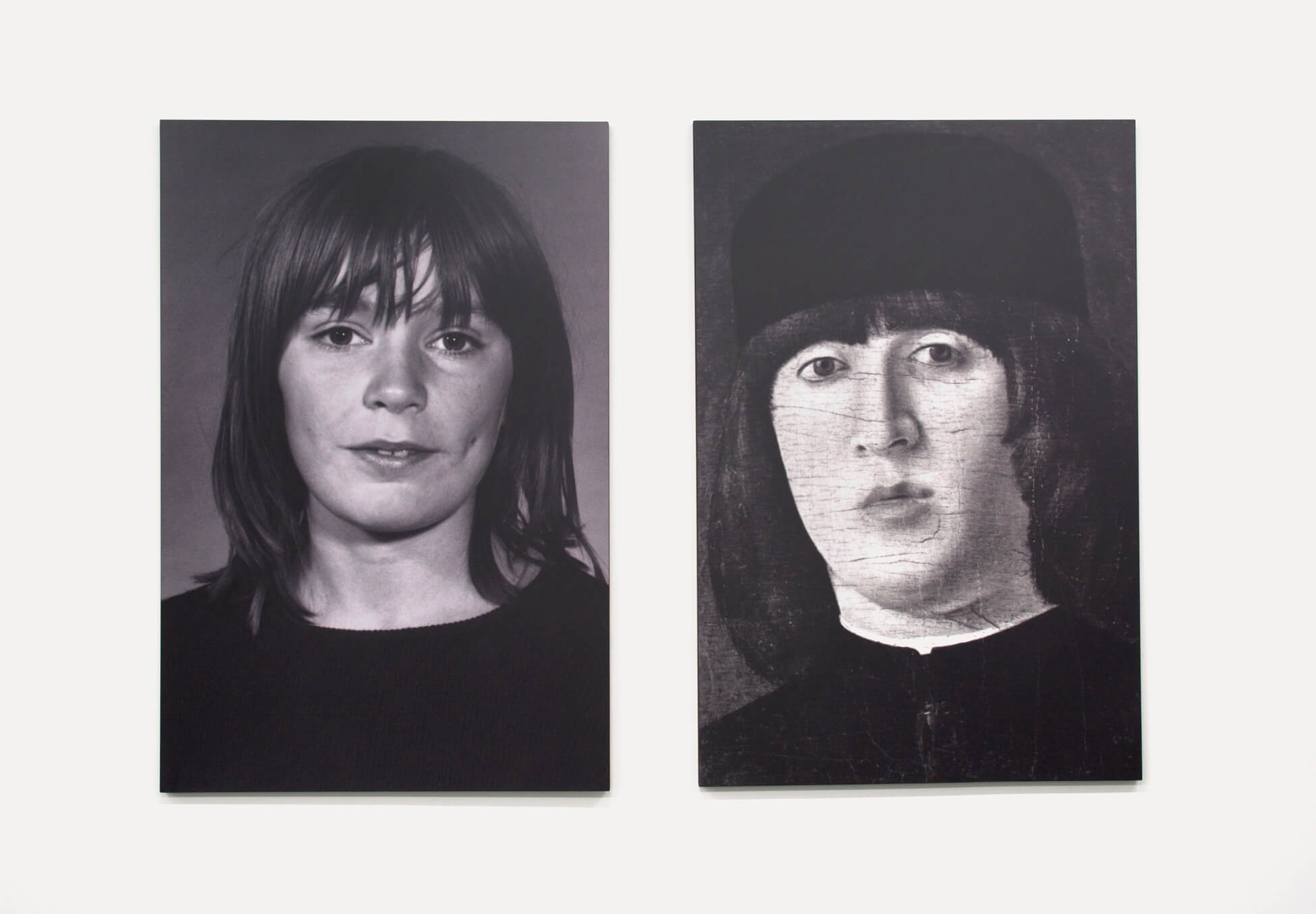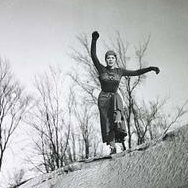Portraits of People Who Resemble One Another 1971 (printed 2003)

Françoise Sullivan, Portraits of People Who Resemble One Another (Portraits de personnes qui se ressemblent), 1971 (printed 2003)
Two digital black and white prints mounted on wood panels, each: 152.4 x 101.6 cm
Collection of the artist
In 1971 Françoise Sullivan was living in Rome with her four sons, and she often visited museums while the children were in school. One day, at the Galleria Nazionale, she happened upon one of the several paintings entitled Portrait of a Young Man by Lorenzo Lotto (1480–1556). In it a youth faces the viewer with an open gaze, his shoulder-length hair framing his face. Sullivan was moved by the painting, though she didn’t immediately know why. At the museum gift shop, she found a postcard of the painting and bought it.
When her sons returned home that afternoon, the youngest, Francis, showed his mother his school photograph, taken that same day. Sullivan was struck by how much her son resembled Lotto’s youthful subject in spite of the some four hundred years that separated them. Francis too faced the viewer with a calm and open gaze, and he too sported shoulder-length hair, his bangs covering his forehead, as those of Canadian boys often did in the 1970s.
The resulting work juxtaposes the two images Sullivan encountered that day, pasted on a rectangular piece of cardboard. The idea was a simple one, nodding to the tradition of the readymade. But she felt it was also a powerful one, one that managed to illustrate in a sharp and concise way the recurrence of images, styles, and ideas over time. It was first shown ten years later, in 1981, as part of Sullivan’s first retrospective at the Musée d’art contemporain de Montréal, and again in 2017 in the Françoise Sullivan: Trajectoires resplendissantes exhibition at the Galerie de l’UQAM. In these contexts, the images were reprinted large scale in black and white, mounted on wood panels, and displayed next to one another directly on the gallery wall.

 About the Author
About the Author
 More Online Art Books
More Online Art Books
 Acknowledgements
Acknowledgements